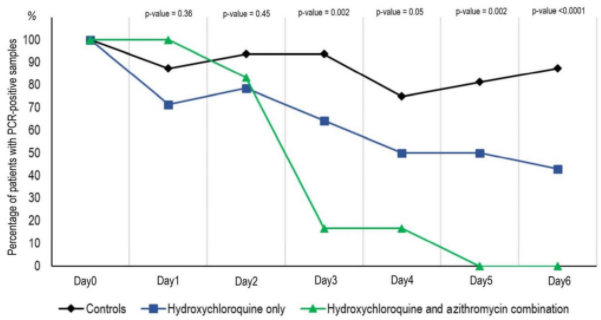Source: Rounding The Earth Author: Mathew Crawford
Yesterday I was made aware of the latest preprint study of results of COVID-19 patients treated by the team at Marseille, France’s UHI. The team headed by Dr. Didier Raoult has published numerous results of early treatment of COVID-19 patients using primarily hydroxychloroquine (HCQ) and azithromycin (AZM) throughout the pandemic, starting with a small controversial study involving just 26 rushed to publication in March of last year, just prior to HCQ’s Trump moment.
The progression of the updates of the patients treated by staff at the UHI in Marseille has grown better seemingly in proportion to France’s case fatality rate (CFR), which was one of the worst in the world during the early part of the pandemic.
Strangely, despite the number of patients studied growing to over 10,000, Dr. Raoult and his team have been subject to a great many attacks.
But unless somebody can demonstrate a complex conspiracy to hide bodies in Marseille, the results make an exceptional case for early ambulatory treatment with a multidrug regimen that includes HCQ and AZM, which happen to be the most common therapies aside from a “vitamin pack” that includes vitamins C and D, zinc, and some others, used at Dr. Brian Tyson’s urgent care facilities in Imperial County, California.
From the latest preprint out of Raoult’s UHI in Marseilles:

A 0.15% CFR throughout 2020 is around 6% of France’s national CFR, which came in at 2.42% in 2020. It is fair to wonder about France’s CFR after removing nursing home patients or normalizing for other risk factors, but it is clear that these statistics represent a vast improvement. And the story gets better…

Only 5 out of 8,315 patients treated early with the medicines in question died. For this group, the fatality rate is more than 97% lower than France’s (again, after corrections this number might not be quite so high, but it is far too high to ignore). And no patients under the age of 60 died at all! Imagine how the generalization of this result might have affected public policy during the pandemic: schools could easily remain open, lockdowns would be even more obviously flawed, more ordinary ring protection strategies could be the priority of further public health policy (and probably should have been, regardless).

And while Dr. Raoult’s team may not see 97% reduced mortality in the data after controlling for the obvious relevant variables, the team is clear about the fact that they don’t know if their protocol is actually optimal! Over a year ago I saw Dr. Raoult comment on the use of zinc by Dr. Zelenko and some others. While I lost track of that video, Dr. Raoult acknowledged the possibility that zinc could upgrade the protocol, and his team mentions that “Zinc and anticoagulants are likely to further improve outcomes.” It may be that Dr. Raoult and his team faced such extraordinary pressure from the world that they wanted to maintain consistency in their protocol for longer than they might otherwise have in order to build an undeniably large set of results. That seems like a great reason never to politicize medicine.
But the question remains: Can any data set ever grow enough to satisfy the Public Policy Gods?
The Chloroquine Wars Part V – A Closer Look at RCTs Studying Hydroxychloroquine Efficacy
The Chloroquine Wars Part VI – The Simple Logic of the Hydroxychloroquine Hypothesis
The Chloroquine Wars Part VIII – Hydroxychloroquine’s Safety Profile and a Cost-Benefit Analysis
The Chloroquine Wars Part X – A Discussion of the Insanity of the Chloroquine Wars
The Chloroquine Wars Part XI – See No Good, Hear No Good, Speak No Good
The Chloroquine Wars Part XII – Manufactured Fear During Hydroxychloroquine’s Trump Moment
The Chloroquine Wars Part XIII -A Clockwork Orange Man
The Chloroquine Wars Part XIV – How to Rig Research: Surgisphere Part I
The Chloroquine Wars Part XVII – Why the Story About India’s April COVID-19 Spike is All Wrong
The Chloroquine Wars Part XV – How to Rig Research: Surgisphere Part II
The Chloroquine Wars Part XIX – Historical Failures of Public Health Authorities
The Chloroquine Wars Part XX – Why The Early Treatment Data is Better Than Anyone Imagines

